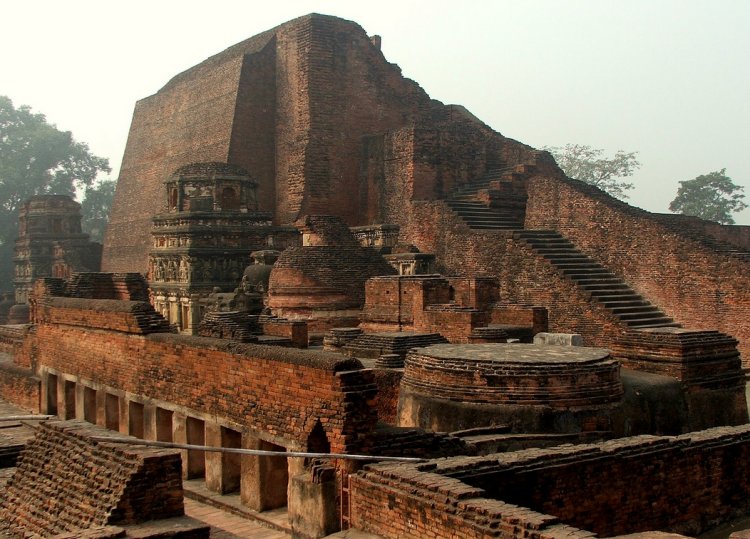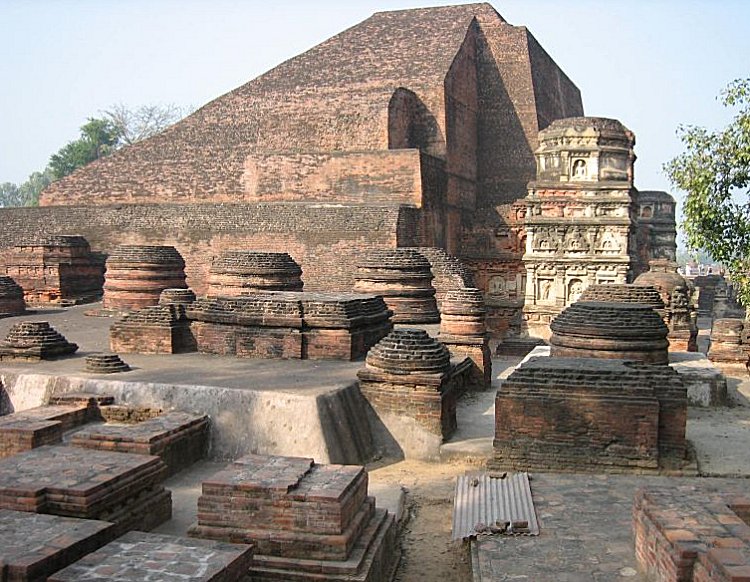Nalanda – One Of The Most Praised Learning Centers And Masterpiece Of Ancient World
A. Sutherland - AncientPages.com - Nalanda was one of the most praised, intellectual circles of the ancient world.
It was an active center of education located about 88 km south-east of Patna in Bihar, northeastern India, and not far from what is today the southern border of Nepal.
Scholars came from all over the world to study philosophy, medicine, astronomy, and other subjects. Credit: myself - CC BY-SA 2.5
Based on historical sources, we can say that the Nalanda University - supported by the Hindu Gupta rulers, Buddhist emperors like Harshavardhana as well as the later Pala Emperors - had a long and celebrated life that lasted almost continually for 800 years from the 5th to 12th century AD.
By the time the first European university was established in Bologna in 1088, Nalanda had been providing higher education to thousands of students from Asian countries for more than six hundred years.
The university was an architectural and environmental masterpiece. It had eight separate compounds, 10 temples, meditation halls, classrooms, lakes, and parks.
It had a nine-story library where monks meticulously copied books and documents so that individual scholars could have their own collections. It had dormitories for students, perhaps a first for an educational institution, housing 10,000 students in the university’s heyday, and providing accommodations for 2,000 professors.
Conjectural Reconstruction of Temple no. 3, Nalanda University. Image credit: Percy Brown (1872-1955) - "Indian Architecture, Buddhist and Hindu", published in 1956 Bombay, India. First published in India in 1900. Public Domain
Nalanda was also the most global university of its time, attracting pupils and scholars from Korea, Japan, China, Tibet, Indonesia, Persia, and Turkey. Students and scholars came to the university to learn and teach.
The university’s library "Dharmaganja" ("Treasury of Truth") and Dharma Ghunj ("Mountain of Truth") had hundreds of thousands of texts.
During the period of its greatest popularity, Nalanda University was celebrated as the world's largest collection of Buddhist literature, with supportive followers admiring the university’s greatness and new philosophies.
Credit: Prince Roy - CC BY-SA 2.0
A great fire wiped out the library of over 9 million manuscripts and at the beginning of the 12th Century, the Muslim invader Bakhtiyar Khalji sacked the university.
In the 1860s the great archaeologist Alexander Cunningham identified the site as the Nalanda University and in 1915/1916 the Archaeological Survey of India began excavations of the site.
Today, Nalanda is one of the most visited historical and architectural landmarks of India.
In 2006, the countries of China, India, Singapore, and Japan proposed a plan to revive and restore the ancient ruins of the Nalanda International University. The new venture is meant to be a revival of Nalanda.
After 800 years, the great learning center was formally inaugurated on 19 September 2014. Classes began at Nalanda University - after centuries of silence.
The powerful vision behind Nalanda to continue the great tradition is important for India, Asia, and for the rest of the world.
Updated on April 5, 2022
Written by – A. Sutherland AncientPages.com Staff Writer
Copyright © AncientPages.com All rights reserved. This material may not be published, broadcast, rewritten or redistributed in whole or part without the express written permission of AncientPages.com
Expand for referencesMore From Ancient Pages
-
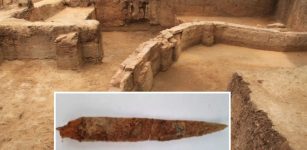 Rare Well-Preserved 2,500-Year-Old Dagger Linked To The Keeladi Civilization Discovered In Tamil Nadu, India
Archaeology | Aug 13, 2021
Rare Well-Preserved 2,500-Year-Old Dagger Linked To The Keeladi Civilization Discovered In Tamil Nadu, India
Archaeology | Aug 13, 2021 -
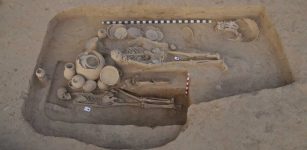 Scientists Use Ancient DNA To Explore Early European Adaptation
DNA | Nov 27, 2024
Scientists Use Ancient DNA To Explore Early European Adaptation
DNA | Nov 27, 2024 -
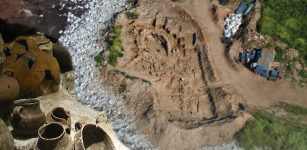 Ancient Pottery Found On The European Atlantic Coast Sheds Light On Cooking In The Bronze Age
Archaeology | Jan 16, 2024
Ancient Pottery Found On The European Atlantic Coast Sheds Light On Cooking In The Bronze Age
Archaeology | Jan 16, 2024 -
 Thousands Of Ignored ‘Nummi Minimi’ Coins Found In Ancient Marea, Egypt With Hidden Fascinating History
Archaeology | Dec 10, 2023
Thousands Of Ignored ‘Nummi Minimi’ Coins Found In Ancient Marea, Egypt With Hidden Fascinating History
Archaeology | Dec 10, 2023 -
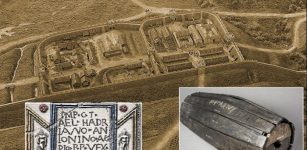 Antonine Wall: Impressive Roman Frontier Built By Empire’s Three Legions In Scotland
Civilizations | Jan 18, 2018
Antonine Wall: Impressive Roman Frontier Built By Empire’s Three Legions In Scotland
Civilizations | Jan 18, 2018 -
 Neanderthals Were Present In Italy Much Earlier Than Previously Thought
Archaeology | Nov 6, 2015
Neanderthals Were Present In Italy Much Earlier Than Previously Thought
Archaeology | Nov 6, 2015 -
 Grave Of Amazon Warrior Who Lived In The Kingdom Of Urartu Discovered In Armenia
Archaeology | Nov 28, 2019
Grave Of Amazon Warrior Who Lived In The Kingdom Of Urartu Discovered In Armenia
Archaeology | Nov 28, 2019 -
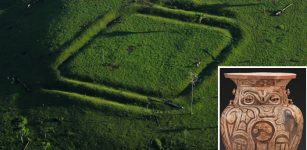 Were Mysterious Ancient Man-Made Earthworks In The Amazon Forest Ritual Communication Spaces?
Archaeology | Sep 6, 2017
Were Mysterious Ancient Man-Made Earthworks In The Amazon Forest Ritual Communication Spaces?
Archaeology | Sep 6, 2017 -
 Extremely Rare Roman Glass Vase Adorned With A Message Found In France
Archaeology | Nov 18, 2020
Extremely Rare Roman Glass Vase Adorned With A Message Found In France
Archaeology | Nov 18, 2020 -
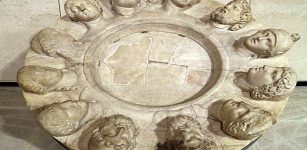 ‘Altar Of Twelve Gods’ At Gabii, Italy Was Once An Important Ancient Place
Civilizations | Apr 1, 2023
‘Altar Of Twelve Gods’ At Gabii, Italy Was Once An Important Ancient Place
Civilizations | Apr 1, 2023 -
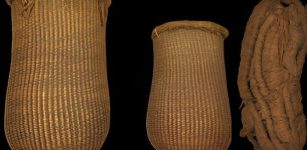 9,500-Year-Old Baskets And 6,200-Year-Old Sandals Found In Spanish Cave
Archaeology | Sep 28, 2023
9,500-Year-Old Baskets And 6,200-Year-Old Sandals Found In Spanish Cave
Archaeology | Sep 28, 2023 -
 Cynane: Talented Female Military Leader Assassinated While Giving A Speech
Featured Stories | Mar 5, 2019
Cynane: Talented Female Military Leader Assassinated While Giving A Speech
Featured Stories | Mar 5, 2019 -
 Mythical Kingdom Of Prester John – Did It Exist?
Featured Stories | Mar 21, 2016
Mythical Kingdom Of Prester John – Did It Exist?
Featured Stories | Mar 21, 2016 -
 Archaeological Evidence That Has Been Suppressed In The Name Of ‘Scientific Conformity’
Featured Stories | Sep 4, 2014
Archaeological Evidence That Has Been Suppressed In The Name Of ‘Scientific Conformity’
Featured Stories | Sep 4, 2014 -
 On This Day In History: Siege Of Belgrade – Hungarian Battle Victory – On July 4,1456
News | Jul 4, 2016
On This Day In History: Siege Of Belgrade – Hungarian Battle Victory – On July 4,1456
News | Jul 4, 2016 -
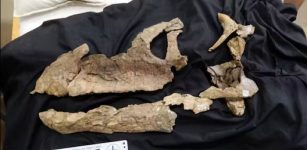 First Near-Complete Sauropod Dinosaur Skull Found In Australia Hints At Ancient Links Between Continents
Featured Stories | Apr 13, 2023
First Near-Complete Sauropod Dinosaur Skull Found In Australia Hints At Ancient Links Between Continents
Featured Stories | Apr 13, 2023 -
 Ancient Stone Cylinders Shed New Light On The Invention Of Writing In Mesopotamia
Artifacts | Nov 6, 2024
Ancient Stone Cylinders Shed New Light On The Invention Of Writing In Mesopotamia
Artifacts | Nov 6, 2024 -
 What Was The Symbolism Behind Native American Feathers?
Ancient History Facts | Apr 21, 2017
What Was The Symbolism Behind Native American Feathers?
Ancient History Facts | Apr 21, 2017 -
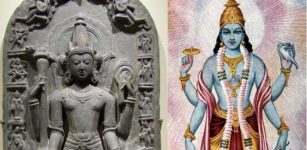 Vishnu: Supreme, Universal Hindu God Whose Avatars Reach Nations, Cultures And Races
Featured Stories | Jul 25, 2019
Vishnu: Supreme, Universal Hindu God Whose Avatars Reach Nations, Cultures And Races
Featured Stories | Jul 25, 2019 -
 Why Were Ancient And Medieval People Horrified Of The Night?
Featured Stories | Nov 11, 2024
Why Were Ancient And Medieval People Horrified Of The Night?
Featured Stories | Nov 11, 2024

